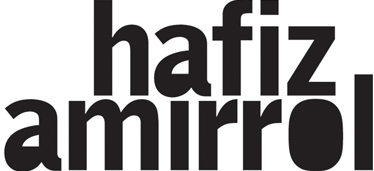‘There is no architecture without a concept – an overriding idea, diagram or parti that gives coherence and identity to a building. Concept, not form, is what distinguishes architecture from mere building.’
‘There is also no architecture without context (except in utopia). A work of architecture is always in situ, or in situation, located on a site and within a setting. The context may be historical, geographical, cultural, political or economic.’
Bernard Tschumi’s lecture on Concept vs Context vs Content,
Architectural Association School of Architecture, 2007
Introduction
My main interest in developing my thesis is within the perimeter of urban transformation that is happening today, with specific focus towards the context of Bandung, Indonesia. Bandung is in many ways the perfect location for examining the generative dynamic of transition that it is experiencing today. My primary objective in conducting this research is to understand the physical and social repertoire of the city. I would start from seeing urban transformation as a complex adaptive system of the city, and try to understand the need to develop techniques for representing and analyzing conditions that are unstable, multiple and contingent on a broad range of equally unstable factors. The research will initially be divided into three main frameworks, as described in Diagram 1.
Diagram 1: Main Frameworks
I would begin the process by identifying the relationship between physical and social structures in selected central and peripheral urban perimeters of Bandung. The selected sites are those that are experiencing urban transformation, and are constantly acting and reacting to its surrounding conditions, be it social, economic or culturally at the architectural, urban or direct scales. By studying organizations and observing the relations and behavior of patterns emerging from their interactions, systematic approaches will be introduced in developing spatial and strategic designs that respond to, activate and enrich the complexity of these conditions. Diagram 2 described the systems approach in devising the perimeter of the research.
Diagram 2: Systems Approach in Devising Research Perimeter
Research Methods
Since the interest of this thesis is to analyze the unstable and transforming qualities of Bandung, strategic research methods are selected in forming the structure of the studies. The research is not to produce a historical analysis of Bandung, but is designed to produce strategic design operations for the city. Multi variables conditions (spatial, programmatic, social, culture, politics, economic, as well as the historical particularities of the city) are the focuses of the study, and will be used to devised ways of developing an appropriate architectural language, design methods and methods for drawing and representing consequent strategic and spatial interventions incorporating all pertinent and direct elements, before producing the design simulation proposal to support the arguments (Diagram 3).
Diagram 3: Design Process Cycle
Strategic Operations
The design thesis will be operated within designed strategic operations. The first approach is to choose or identify and existing urban condition within the central or peripheral areas of Bandung that can be anything from a current development strategy to any form of current events that directly influence the city. At the urban scale, the research will focus on a territory that relates to the chosen urban condition, defining its perimeter, analyze its structure and transform it into a potential urban hub by designing spatial and strategic interventions. Apart from these strategic design operations, the thesis will also focus on the studies on selected leading architects that play important role in the development and progression of architecture and urbanism in the context that is similar to the thesis’ subject of interests.




No comments:
Post a Comment